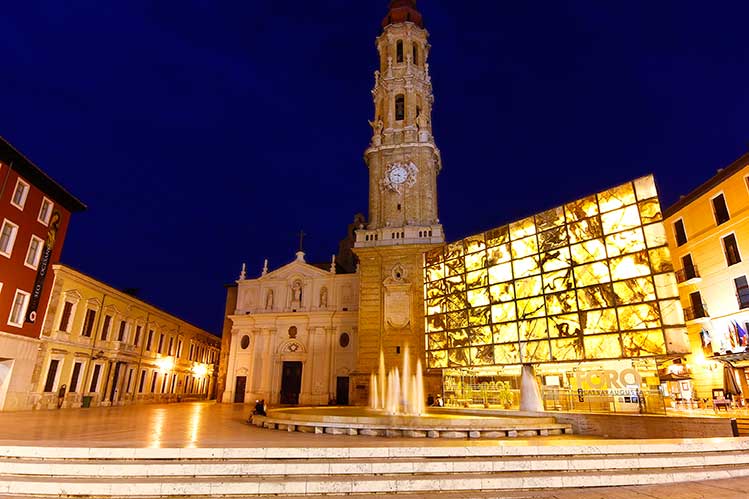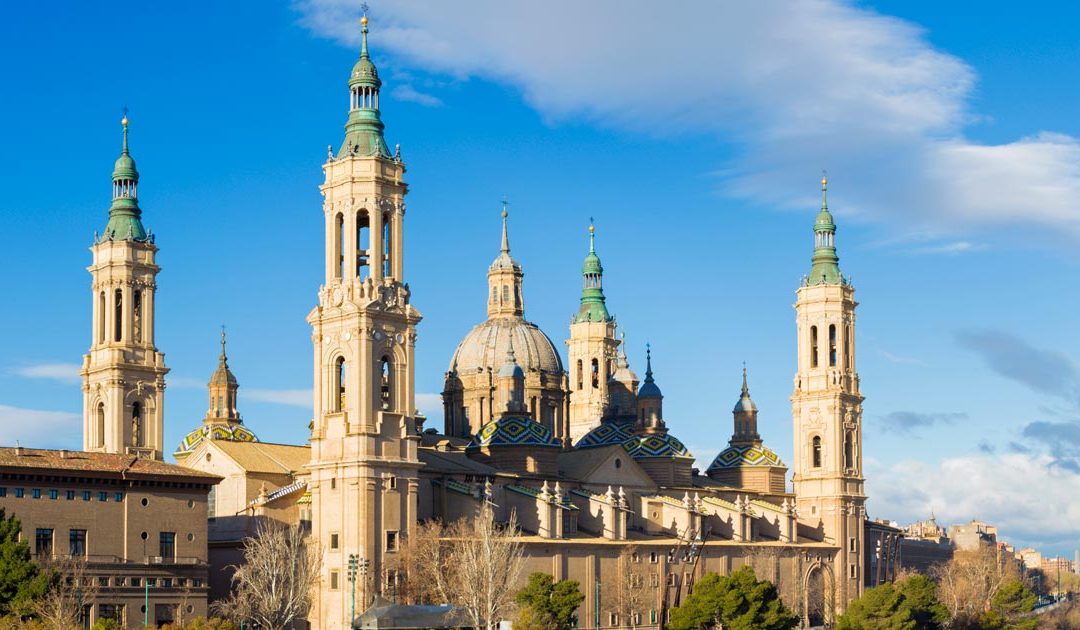
Oct 28, 2020 | Places to visit
When we do family tourism we like to “get lost” in the cities we visit,walk them in our air, discovering spaces that, per best, are not on the official tourist routes,or that, for whatever reason, end up being charming.
However, the building we are talking about today is not one of those “lost” places, but it has a lot of history and its visit becomes almost essential if you visit Zaragoza with children, although it is not charming.
The Palace of the Aljafería seems from the outside a small castle or fortress, very beautiful with its turrets and its earthy color, and this aesthetic is always attractive to the little ones.

The Palacio de la Aljafería is, in fact, a mixture of buildings, of different style and function, which, over the centuries, have been overlapping and joining until we reach our days with their rare half-Muslim beauty and, for a few years now, as seat of the Aragonese courts. We went to see her on a sunny morning and, from afar, the boys seemed to like them (their castle look with moat counted a lot in their favor). The ticket office looks like a small kiosk next to the parking lot for deputies and other staff that is before the bridge that gives access to the Aljafería.
You can sign up for the guided tour or discover the building on your own, but we advise you to take advantage of the good work of the guides to, in an hour, get to know the history and characteristics of this interesting building well.

Oct 28, 2020 | Places to visit
As we have seen on some occasion, Aragonese Mudejar art became an artistic representation of the first order by combining the characteristics of mudejar with the particularities of the region. Although many are the Aragonese examples, we will stop at the Mudejar features that a building as emblematic as the Seo presents in the old town of Zaragoza.
The Cathedral of the Savior, known in our city as the Seo, is a building that shows a mixture of styles, since it is the result of constant structural modifications throughout history. It currently has five naves, although originally it emerged as a Mudejar cathedral of three naves built in turn on the old mosque, placing the beginning of the works between 1153 and 1184.
The architectural evolution of the building can be realized in several phases or construction periods, ranging from the twelfth century, in which the cathedral has three naves and three semicircular apses; the fourteenth century in which Gothic enlargements are carried out, with elevation of the vaults and addition of two more side naves; until the sixteenth century with the extension of the tester with two sections to turn the plant into a square. The current tower dates from 1683, and finally, we find the neoclassical cover of the eighteenth century.

Faced with this complex stylistic configuration, what are the representative elements of mudejar that we can find in the Seo? Of all the areas of the cathedral, the pararoquieta of San Miguel are characteristically Mudejar, with its octagonal wooden roof attached with Mocharabes of Sevillian influence; the wide Mudejar decorative repertoire of the outer wall; and the octagonal brick cimborrium built between 1505 and 1520 by Juan Lucas “Botero” based on an eight-pointed star. In all these locations we can observe the own elements that characterize Mudejar art, both in ornamentation and structure.
The decoration in Mudejar art becomes one of the fundamental pillars of the style, becomes as important as the architectural structures themselves. In the Seo, the decorations of geometric elements such as bows, stars and diamonds, built with brick, representative material of the style, especially in the Aragonese area, are noteworthy. Similarly, as a characteristic of the Aragonese Mudejar, we discovered the application of glazed ceramics on the wall (very evident in the Seo on the outer wall), material that enhances the chromatism and brightness of the decorative panels along with the sets of lights and shadows of the repetitive rhythms of the brick decoration.
This same brick is the protagonist in the construction of the octagonal base cimborrium, direct heir to Islamic art, of which is representation in Zaragoza the Aljafería, with a decorative repertoire of diamond panels and strips of reticles. This cimborrium is, along with those of Tarazona and Teruel, the clearest sign of the pervivience of Mudejar structures in what were in its day the most representative buildings of its cities, the Cathedrals.
Another of the predominant samples of Mudejar forms that we find in the Seo,is the wooden roof of the Parroquieta de San Miguel. The roofs of wooden armor, both lime and pair and knuckle, are characteristic of Mudejar art. However in Aragon, these wooden roofs were very scarce (we can highlight the roof of the Cathedral of Teruel almost as an exception), being more common the vaulted roofs of crossings built in brick. Therefore the roof of San Miguel is also a stylistic exception that makes it almost unique in Aragon.
The organic growth of the Cathedral of the Savior over the centuries has made this building a magnificent compendium of styles ranging from Romanesque primal to neoclassicism. Discovering the Mudejar elements that are located in it demonstrates the high quality of the work, and transforms into a starting point to advance the knowledge of the different styles that we find in the building.
The Zaragoza City Council, from the department of Zaragoza Turismo, organizes different guided tours that show “in situ” the majesty and history of buildings such as La Seo.

Oct 28, 2020 | Places to visit
What to see in the Basilica of the Pillar of Zaragoza?
1. The Holy Chapel of the Virgin: the ninth largest church in the world houses the magnificence and spectacularness of the Holy Chapel of the Virgin and its surroundings.
2. Our Lady of pilar: the faithful and visitors come from all over the world, visit the image and witness the traditional pass of the children through their mantle.
3. We must talk about the tradition of laying candles.
4. Kisses on the Column (which has sunk it about five centimeters).
5. The painting of the Holy Family in which all the portrayed seem to follow the visitor with the gaze.
6. The impressive organ.
7. The sale of the tape with the measure of the Virgin of the Pillar.
8. The various chapels, the great paintings.
9. The climb to the tower with privileged views of Zaragoza.
10. The Wonders of the Pilarista Museum.
11. The magnificent main altarpiece of Damian Forment.
12. The bombs dropped in the Spanish civil war that did not explode and are exposed next to the Holy Chapel of the Virgin.
13. Flags of all Latin American countries on the walls.
14. The frescoes of Francisco de Goya in the domes.





